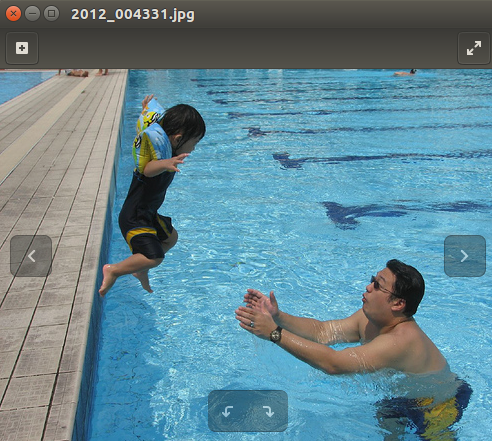大家好,欢迎来到IT知识分享网。
最近在做与目标检测模型相关的工作,很多都要求VOC格式的数据集.
PASCAL VOC挑战赛 (The PASCAL Visual Object Classes )是一个世界级的计算机视觉挑战赛, PASCAL全称:Pattern Analysis, Statical Modeling and Computational Learning,是一个由欧盟资助的网络组织。很多模型都基于此数据集推出.比如目标检测领域的yolo,ssd等等.
voc数据集结构
看下目录结构
:~/git_projects/models/research/VOCdevkit/VOC2012$ tree -d
.
├── Annotations
├── ImageSets
│ ├── Action
│ ├── Layout
│ ├── Main
│ └── Segmentation
├── JPEGImages
├── SegmentationClass
└── SegmentationObject
-
JPEGImages
这个目录下存放的是图片数据. -
Annotations下存放的是xml文件,描述了图片信息.
~/git_projects/models/research/VOCdevkit/VOC2012/Annotations$ cat 2012_004331.xml
<annotation>
<filename>2012_004331.jpg</filename>
<folder>VOC2012</folder>
<object>
<name>person</name>
<actions>
<jumping>1</jumping>
<other>0</other>
<phoning>0</phoning>
<playinginstrument>0</playinginstrument>
<reading>0</reading>
<ridingbike>0</ridingbike>
<ridinghorse>0</ridinghorse>
<running>0</running>
<takingphoto>0</takingphoto>
<usingcomputer>0</usingcomputer>
<walking>0</walking>
</actions>
<bndbox>
<xmax>208</xmax>
<xmin>102</xmin>
<ymax>230</ymax>
<ymin>25</ymin>
</bndbox>
<difficult>0</difficult>
<pose>Unspecified</pose>
<point>
<x>155</x>
<y>119</y>
</point>
</object>
<segmented>0</segmented>
<size>
<depth>3</depth>
<height>375</height>
<width>500</width>
</size>
<source>
<annotation>PASCAL VOC2012</annotation>
<database>The VOC2012 Database</database>
<image>flickr</image>
</source>
</annotation>
对应的图片为
我们注意需要关注的就是节点下的数据,尤其是bndbox下的数据.xmin,ymin构成了boundingbox的左上角,xmax,ymax构成了boundingbox的右下角.
啥叫boundingbox? 模型检测出目标了,会画一个框框,标定这个框框内的东西,认为是一个object.
3. ImageSets
- Action下存放的是人的动作(例如running、jumping等等,这也是VOC challenge的一部分)
- Layout下存放的是具有人体部位的数据(人的head、hand、feet等等,这也是VOC challenge的一部分)
- Segmentation下存放的是可用于分割的数据。
- Main下存放的是图像物体识别的数据,总共分为20类。
我们主要关注Main下面的文件.
一共63个文件,train.txt/val.txt/trainval.txt里面记录的是对应的数据集图片名字. 剩下60个文件=20*3. 一共20个类别,每个类别有xxx_train.txt,xxx_val.txt,xxx_trainval.txt.
1代表正样本,-1代表负样本
看一下aeroplane_train.txt中的部分内容
2011_003177 1 //意思是2011_003177.jpg中有aeroplane
2011_003183 -1 //意思是2011_003183.jpg中没有aeroplane
2011_003184 -1
2011_003187 -1
2011_003188 -1
2011_003192 -1
2011_003194 -1
2011_003216 -1
2011_003223 -1
2011_003230 -1
2011_003236 -1
2011_003238 -1
2011_003246 -1
2011_003247 -1
2011_003253 -1
2011_003255 -1
2011_003259 -1
2011_003274 -1
看一下train.txt中的内容 只含图片名称
2011_003187
2011_003188
2011_003192
2011_003194
2011_003216
2011_003223
2011_003230
2011_003236
2011_003238
制作自己的voc数据集
- 数据准备
- 标定图片:生成label文件,文件内容为类别及boundingbox信息
- 生成符合VOC格式要求的文件 主要是Annotations/.xml ImageSets/main/.txt
数据准备这一步,你的数据可能来自公开数据集,或者合作方的私有数据.
数据集的标注这一步可以使用labelIImg 标注自己的图片https://github.com/tzutalin/labelImg
在做数据集格式转换的过程里,不可避免的要写很多脚本,每个人的需求不同,转换前拿到的文件内的数据格式不同,需要的脚本也都有所差异.这里提供几个我自己用的脚本.
#数据集划分
import os
import random
root_dir='./park_voc/VOC2007/'
## 0.7train 0.1val 0.2test
trainval_percent = 0.8
train_percent = 0.7
xmlfilepath = root_dir+'Annotations'
txtsavepath = root_dir+'ImageSets/Main'
total_xml = os.listdir(xmlfilepath)
num = len(total_xml) # 100
list = range(num)
tv = int(num*trainval_percent) # 80
tr = int(tv*train_percent) # 80*0.7=56
trainval = random.sample(list, tv)
train = random.sample(trainval, tr)
ftrainval = open(root_dir+'ImageSets/Main/trainval.txt', 'w')
ftest = open(root_dir+'ImageSets/Main/test.txt', 'w')
ftrain = open(root_dir+'ImageSets/Main/train.txt', 'w')
fval = open(root_dir+'ImageSets/Main/val.txt', 'w')
for i in list:
name = total_xml[i][:-4]+'\n'
if i in trainval:
ftrainval.write(name)
if i in train:
ftrain.write(name)
else:
fval.write(name)
else:
ftest.write(name)
ftrainval.close()
ftrain.close()
fval.close()
ftest .close()
#.txt-->.xml
#! /usr/bin/python
# -*- coding:UTF-8 -*-
import os, sys
import glob
from PIL import Image
# VEDAI 图像存储位置
src_img_dir = "/home/train/dataset-expand/park_voc/VOC2007/JPEGImages"
# VEDAI 图像的 ground truth 的 txt 文件存放位置
src_txt_dir = "/home/train/dataset-expand/label_expand"
src_xml_dir = "/home/train/dataset-expand/park_voc/VOC2007/Annotations"
img_Lists = glob.glob(src_img_dir + '/*.jpg')
img_basenames = [] # e.g. 100.jpg
for item in img_Lists:
img_basenames.append(os.path.basename(item))
img_names = [] # e.g. 100
for item in img_basenames:
temp1, temp2 = os.path.splitext(item)
img_names.append(temp1)
for img in img_names:
im = Image.open((src_img_dir + '/' + img + '.jpg'))
width, height = im.size
# open the crospronding txt file
gt = open(src_txt_dir + '/' + img.replace('img','label',1) + '.txt').read().splitlines()
#gt = open(src_txt_dir + '/gt_' + img + '.txt').read().splitlines()
# write in xml file
#os.mknod(src_xml_dir + '/' + img + '.xml')
xml_file = open((src_xml_dir + '/' + img + '.xml'), 'w')
xml_file.write('<annotation>\n')
xml_file.write(' <folder>VOC2007</folder>\n')
xml_file.write(' <filename>' + str(img) + '.jpg' + '</filename>\n')
xml_file.write(' <size>\n')
xml_file.write(' <width>' + str(width) + '</width>\n')
xml_file.write(' <height>' + str(height) + '</height>\n')
xml_file.write(' <depth>3</depth>\n')
xml_file.write(' </size>\n')
# write the region of image on xml file
for img_each_label in gt:
spt = img_each_label.split(',') #这里如果txt里面是以逗号‘,’隔开的,那么就改为spt = img_each_label.split(',')。
xml_file.write(' <object>\n')
xml_file.write(' <name>' + str(spt[4]) + '</name>\n')
xml_file.write(' <pose>Unspecified</pose>\n')
xml_file.write(' <truncated>0</truncated>\n')
xml_file.write(' <difficult>0</difficult>\n')
xml_file.write(' <bndbox>\n')
xml_file.write(' <xmin>' + str(spt[0]) + '</xmin>\n')
xml_file.write(' <ymin>' + str(spt[1]) + '</ymin>\n')
xml_file.write(' <xmax>' + str(spt[2]) + '</xmax>\n')
xml_file.write(' <ymax>' + str(spt[3]) + '</ymax>\n')
xml_file.write(' </bndbox>\n')
xml_file.write(' </object>\n')
xml_file.write('</annotation>')
目标检测判断标准
- iou
- mAP
今天先不写了,待补充.
免责声明:本站所有文章内容,图片,视频等均是来源于用户投稿和互联网及文摘转载整编而成,不代表本站观点,不承担相关法律责任。其著作权各归其原作者或其出版社所有。如发现本站有涉嫌抄袭侵权/违法违规的内容,侵犯到您的权益,请在线联系站长,一经查实,本站将立刻删除。 本文来自网络,若有侵权,请联系删除,如若转载,请注明出处:https://yundeesoft.com/34158.html




